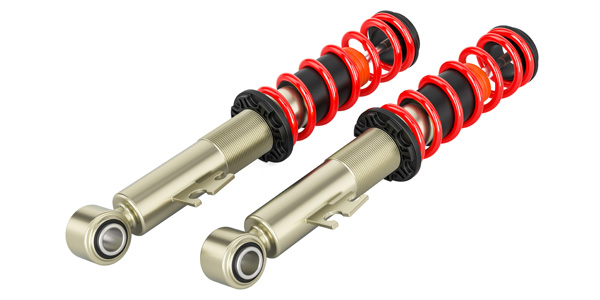Is it Time to Replace Shocks or Struts?

A bumpy ride is a telltale sign something is wrong with your car. And more often than not, it’s the suspension parts that are to blame, particularly, the shocks or struts. These components play a crucial role in ensuring a smooth and comfortable ride. But how do you know when it's time to replace them? Discover the answer by reading on.
Bumpy Ride
One of the most apparent signs that your shocks or struts need replacing is a rough and bouncy ride. If your car feels like it's hopping over every pothole or dips excessively when you hit a speed bump, it's a clear indication that your suspension system needs attention. Feel for any unusual vibrations or noises while driving over uneven surfaces—it's your car's way of telling you it's time to get those shocks or struts checked.
Lengthy Braking Distances
The braking system is one of the car components that get affected immediately if the shocks or struts have a problem. If you notice that your car takes longer to come to a stop than usual, especially when applying the brakes firmly, it might be time to consider replacing your shocks or struts. Diminished suspension performance can cause your car's weight to shift dramatically during braking, compromising its stopping power.
Nose Dives and Rear Squats
When you brake or accelerate, your car should maintain a level position. Excessive front-end diving when braking or significant rear-end squatting during acceleration are clear indicators of worn-out shocks or struts. These vital components are responsible for distributing the weight of your vehicle appropriately, ensuring a balanced stance. Any deviation from a level position is a clear indication that these parts need to be replaced.
Uneven Tire Wear
Pay attention to your tires. If you notice uneven wear patterns, it's a red flag for potential suspension problems. Worn-out shocks or struts can cause tires to wear unevenly, with cupping, feathering, or bald spots appearing on the tread surface. Proper suspension support helps maintain consistent tire contact with the road, ensuring even wear. If you spot irregularities, contact your mechanic.
Leaks and Physical Damage
Look for any signs of leaks, such as oily residue or wetness around the shocks and struts. Leaks are indicative of internal damage or seal failure, compromising the performance of the shocks or struts. Additionally, examine the components for any physical damage, such as dents, rust, or excessive corrosion. These issues can weaken the structural integrity of the shocks or struts, necessitating their replacement.
High Mileage and Age
Is your car old? Shocks and struts generally have a lifespan of 50,000 to 100,000 miles, depending on driving conditions and maintenance. If your car has reached this mileage range or is more than ten years old, it's wise to have the shocks or struts inspected, even if you haven't noticed any noticeable symptoms. Preventive replacement can save you from potential headaches down the road.
Final thoughts
Your car's shocks and struts are essential for a comfortable and safe driving experience. Pay attention to the signs that they have damage. Early detection always saves you from a lot of headaches and budget dents.